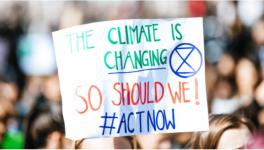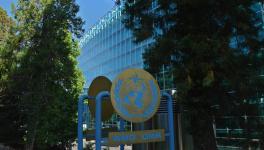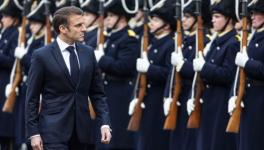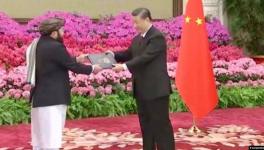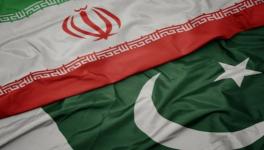Hundred Seconds to Doomsday at Midnight
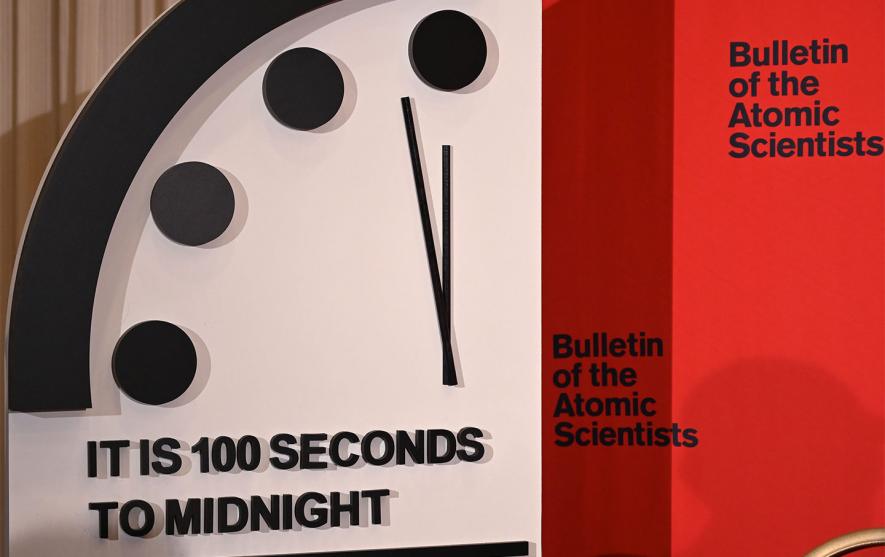
The Doomsday Clock is a striking metaphor for the precarious state of the world, especially since it is backed by rigorous scientific scrutiny. The University of Chicago-based Bulletin of Atomic Scientists (BAS) issues an annual warning to the public as to just how close human beings are to extinction.
Physicist and JNU professor emeritus, R Rajaraman, is the only Asian scientist who has been a member of the Board of Science and Security of the Bulletin, which sets the clock annually. He explains in an interview to Rashme Sehgal why the clock has been moved to just 100 seconds from doomsday for the human race.
Why has the Doomsday Clock been moved forward this year?
The Doomsday Clock was started soon after the first nuclear explosion, by scientists who were worried about the future of the world. Many top scientists, inspired by Bertrand Russell and Albert Einstein, decided they needed to start a journal that would highlight the level of danger we face. A very clever artist got the idea of a clock on the cover of each month’s issue of this journal, on whose board have been numerous Nobel laureates.
Midnight on the clock represents the Holocaust or end of the world, caused by nuclear weapons. Every year the Science and Security Board of the bulletin sets the clock. This was meant to indicate how advanced, in their judgement, the prospects of Holocaust are. It slowly acquired the name, Doomsday Clock. The public has also come to be involved with it. At the end of every November, a dozen members assess the situation. I was the only Asian Asian on the Science and Security Board. I joined the board seven years ago; it is a three-year term. I was also asked to serve another term.
It was a very enriching experience. The public announcement of the position of the clock has become a PR event, which is held in Washington in January. This year, to register additional concerns, they decided to move the clock a 100 seconds closer to Holocaust. Some years ago, they added climate change as another existential threat. Climate scientists are now on the board along with nuclear scientists and strategists in international relations.
Why the additional concerns on the nuclear front ?
Because things are getting worse on the nuclear front. Until a few years back, there were various arms control treaties such as NPT in place and though movement towards disarmament was not as fast as we would have liked, the number of nuclear weapons was coming down (although not in India and Pakistan). That was a healthy direction we were moving in. Most importantly, the relationship between Russia and the United States, which had 90% of the weapons, had gradually improved. Their arsenal of 60,000 nuclear weapons had come down to 16,000 because of gradual negotiations. That is a huge reduction, but if exploded together, they could still reduce civilisation to rubble.
Why was this reversal stopped?
These arsenals reduced until and during [former United States President Barack] Obama’s period. He was the first American president committed to disarmament and took several measures to reduce nuclear weapons. The New START Nuclear Arms Treaty is one example. Obama met then Russian president [Dmitry] Medvedev and they made a joint declaration to make the world nuclear weapons-free. But by the end of Obama’s term, the situation began deteriorating. President Trump’s coming to power was viewed as a disaster, especially by liberal Americans. In 2016, when I went for the meeting, there was massive of gloom amongst my colleagues. Trump had a one-point agenda to undo whatever Obama had done, whether in the field of healthcare or immigration and of course on nuclear matters.
Trump pulled out from the Iran deal which had been a great step forward towards ending hostilities. The treaty with Iran and countries of Europe had been worked out with great difficulty. There were other treaties that Trump pulled out from, including the INF Treaty which banned a certain class of missiles. Meanwhile, Putin has also become very aggressive in his postures and both these countries are behaving very belligerently.
Trump did try to bring about some détente with North Korea?
Trump’s tweets against the North Korean’s president were very aggressive, but then North Korea developed both nuclear bombs and missiles to carry them all the way to the United States mainland. This was a huge threat to the United States. The only other country that could do so was Russia. Though both Russia and the United States have built an armoury, they had deterrents too. The US had been obsessed with Iran possibly developing nuclear capability, but here was small nation with President Kim Jong-un, whom they had perceived a joker, announce a successful test.
Trump has no embarrassment when he reversed his position and agreed meet with Kim. Both North Korea and the United States held negotiations, but they came to nothing.
Is Iran developing a nuclear bomb?
After the United States pulled out of the Iran Nuclear agreement, Iran may go back to where they had started. It may not have a bomb now, but they are developing the capabilities.
What factors are causing so much alarm amongst scientists?
The United States under Trump has strengthened its nuclear program. They have a Nuclear Policy Review (NPR) every few years. Their NPR of last year suggested all kinds of increases in their arsenal. The present treaty binds them somewhat, so they can’t make more in number, but they are making smaller bombs, and improvements—hypersonic and supersonic missiles. Their plan is to be able to use these bombs.
Trump has given them the license to make usable bombs. This is a huge development. Since Hiroshima, the accepted taboo is that nuclear weapons would not be used. Now bombs that can be used even in small conflicts are being developed. This is a very dangerous development. There is enough indication that Putin is also upgrading his nuclear armoury, though this is not so much in the public domain.
What about India and Pakistan? Is the subcontinent close to a nuclear flashpoint?
I tell my colleagues in the West that we are not so crazy. India and Pakistan have had very hostile relations; Pakistan indulges in terrorist activities against us but wants to keep their level where they are. It does not want a nuclear conflict. A game of bluff is on. We two countries have 100 nuclear bombs each. In the Bulletin, members have always brought up the India and Pakistan conflict. Being the only Asian, I would tell them that the real situation is more complex. Today the situation is not just India versus Pakistan but India versus Pakistan and China. The danger is not of the kind that it will lead to nuclear exchange.
Countries have opted to go nuclear because of “deterrence”. Do they feel vulnerable to attacks without them?
That is indeed the case. When Iraq was attacked, the Pakistanis used to say, thank god we have (nuclear) weapons or we might have been attacked instead of them. Today, both the United States and Russia have turned hawkish. Dangers are now back to what they used to be some years ago.
Who is this new situation benefiting?
It is benefiting hawks on both sides. In both countries, weaponisation is a huge industry. Nobody is thinking of the long term.
Will this trend continue?
I don’t know—maybe it will change if the government changes in the United States. For now, the nuclear balance has been disturbed. Pakistan can opt to do the same and make smaller bombs. India can too. This trend is extremely irresponsible and dangerous.
The other problem of course is climate change?
Climate change is real, not something scientists or activists have thought up. Some aspects of it are being measured by scientists carefully year after year; for example carbon emissions released into the atmosphere are measured and it is steadily growing.
More carbon in the atmosphere has raised the levels of temperature. Mean temperatures are rising and for this too there is a scientific record. Melting glaciers are raising the ocean water levels, including in the Himalayas. Many parts of the world including the Maldives and the Sunderbans in Bangladesh will be inundated in the next 50 years or so. Actually, at the rate at which this is happening, it could happen in the next 20 to 30 years, though this [aspect] is speculation...
Melting glaciers means rivers will be inundated, causing floods; but once the water is gone, there will be no or very little water. These changes will affect all the world’s countries.
What do scientists say about reversing this process?
This is not in the hands of scientists. Politicians and industrialists need to act, but you have a president like Trump who says there is nothing like climate change. The Indian government is not in such denial, but the rate of intervention here is much too slow.
We are also witnessing extreme heat and cold weather events.
These are weather anomalies. Extreme heat in Delhi, very cold weather somewhere else... It is not known whether this is due to climate change. Each case has to be analysed individually, by computers, for scientists do not have enough data. No doubt our entire coastal areas will go under due to rising sea levels. This will cause massive chaos where large numbers of the population will have to be evacuated. It will keep getting worse. Disasters such as these can cause wars. It is, overall, a very bad situation.
Get the latest reports & analysis with people's perspective on Protests, movements & deep analytical videos, discussions of the current affairs in your Telegram app. Subscribe to NewsClick's Telegram channel & get Real-Time updates on stories, as they get published on our website.









